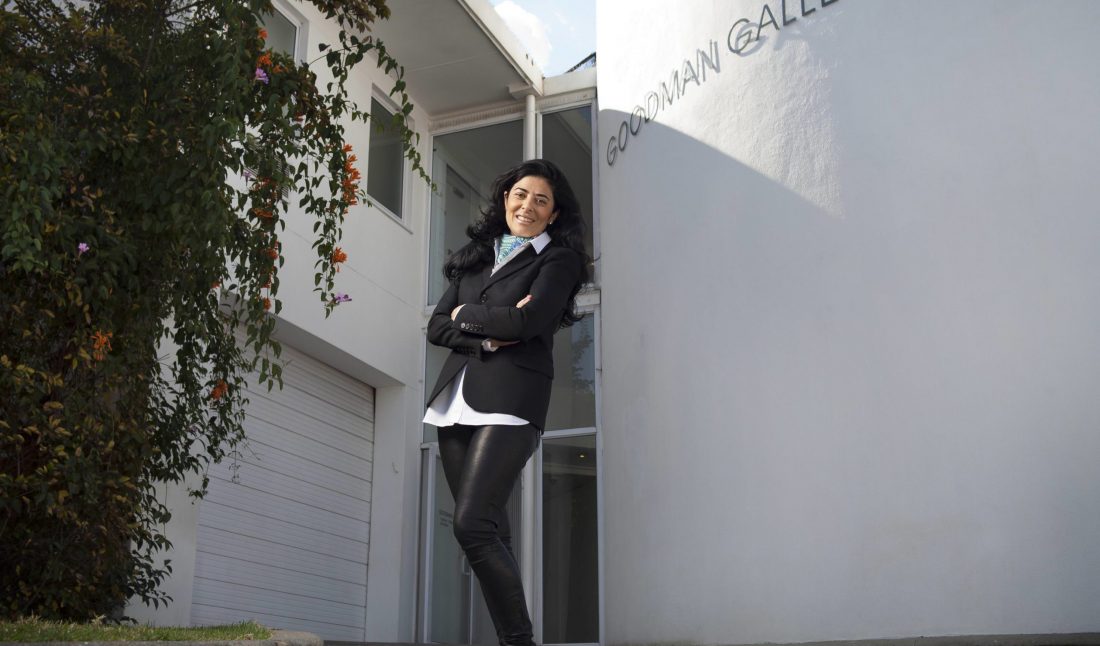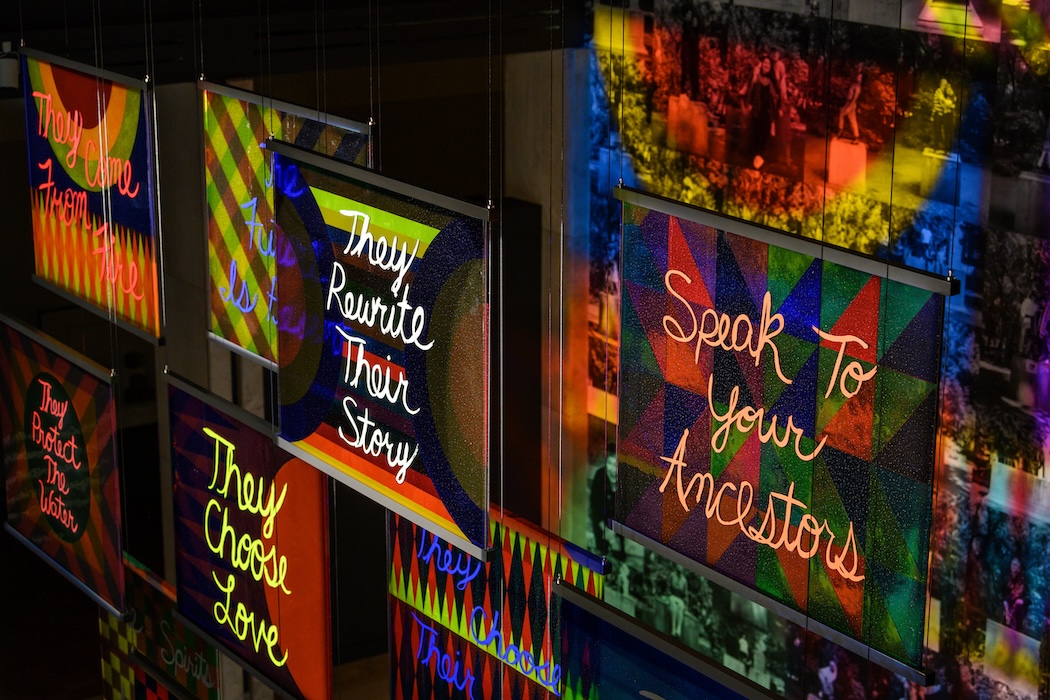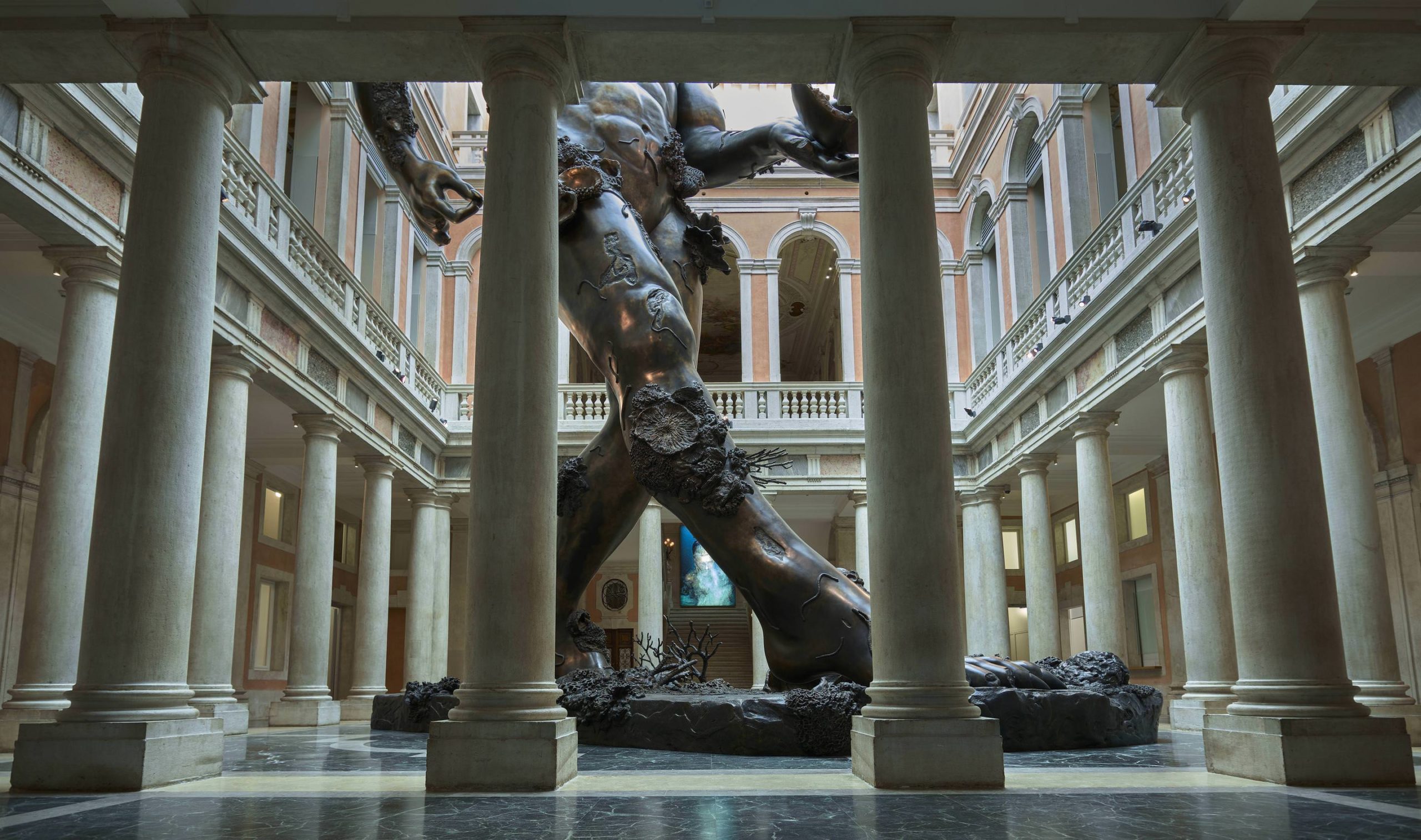Gallerist Liza Essers recently celebrated 10 years at the helm of South Africa’s top contemporary art gallery, Goodman Gallery. Essers moved into the art world after a career in finance and film, drawn to working with artists looking to effect social change. Goodman Gallery and its legacy—it was founded by Linda Goodman in 1966 during apartheid as the only space to show black artists at the time—would be the perfect fit.
Over the past decade, Essers has expanded the gallery’s roster and vision to include more international artists, more women, and more artists of color. This spring, they’ll show work by Samson Kambalu and Jabulani Dhlamini in their Johannesburg space and by Carla Busuttil and Haroon Gunn-Salie in Cape Town. We spoke with Essers about carrying on the mission of social responsibility at Goodman Gallery.
WHITEWALL: You came to the art world after working in finance and film. What about the role of the gallerist clicked for you?
LIZA ESSERS: To work with artists is to engage with some of society’s most interesting and dynamic thinkers and makers. It is a thrill and an honor to work with special souls looking to effect social change. Managing finances and strategic thinking are big parts of running a successful gallery, so I am grateful to that experience.
WW: What drew you to Goodman Gallery in particular?
LE: I was drawn to Goodman Gallery for its legacy as the top South African gallery, representing the likes of William Kentridge, Lisa Brice, Sue Williamson, and Sam Nhlengethwa, but I was also struck by its possibilities for global growth. Over the past 10 years we have expanded the gallery’s roster and curatorial vision to become more outward looking and have emerged as a contemporary art gallery with an international program and presence.
WW: The gallery has an incredible history. How does the gallery carry on that legacy of challenging dominant power structures and effecting social change?
LE: “In Context” and “South-South” are ongoing curatorial initiatives that I set up in the last 10 years as sustained attempts to challenge local and global power structures and to counter toxic nationalist narratives. At this charged moment in history, with the notion of global communities clashing with a faux-nostalgic, take-back-control rhetoric, I am interested in the ways that artists like Hank Willis Thomas counter these populist narratives via explorations of ideas around home and belonging.
These initiatives are intended to function like mini-biennales across Joburg and Cape Town where a broader arts infrastructure is still developing. “In Context: Africans in America” [2016] was partly held at the Johannesburg Art Gallery, an important but neglected museum in the city. I am also interested in mining the Global South as a simultaneously problematic and restorative concept. Goodman ended 2018 with its third series of “South-South,” bringing work by Brazilian artist Ernesto Neto to South Africa for the first time as well as an extensive film program featuring a number of South American artists. These extensively researched projects are socially, as opposed to commercially, driven.
Goodman Gallery also reaches beyond its role as an art gallery, partnering with charities to raise money for local social issues. We have collaborated with the NGO Orange Babies on a couple of occasions, creating limited-edition plates designed by Goodman artists, for which the proceeds went towards their HIV prevention projects across Africa. This May, we are collaborating with Judge Edwin Cameron to raise funds for the Witkoppen Clinic, which provides medical care to 400 patients a day who are without health care living on Johannesburg’s northern fringes.
WW: You’ve reshaped that roster to include far more women and to be more international in scope. How has that been key to your continued success?
LE: I seek out artists at the cutting-edge of contemporary art practice, many with feminist and postcolonial interests threaded through their work. As a result, Goodman’s roster has grown organically to include more women and artists of color. This has—no doubt—been a part of the gallery’s continued success as the art world is beginning to open itself up to be reshaped by previously sidelined voices. I am proud to have such a dynamic roster of artists, and the women are finally thriving!
WW: Have you always seen artists and art as a driver for social change?
LE: Absolutely—it’s the main reason I have an art gallery. I’ve always seen art as a powerful precipitator for social change for the ways that it can spark difficult feelings and conversations and ultimately shift how people see the world. I think of Goodman’s artists as united by a drive to challenge dominant social narratives, which can be achieved in a myriad of ways.
WW: A key part of your programming is taking on a project every year with a local public institution. Do you know yet the project for 2019?
LE: This year we are planning a major retrospective and catalogue for South African expressionist legend David Koloane, which will travel from Iziko in Cape Town to WAM in Johannesburg.
WW: It’s also important for you to bring back to South Africa some of the major international projects your artists have put on. Why?
LE: Where possible, Goodman sets aside a budget to enable large-scale international projects to be realized on South African soil. I believe that these projects are key to growing local audiences and facilitate South Africa’s ability to meaningfully participate in a global dialogue in the arts.
WW: You travel a great deal. What’s a recent exhibition or studio visit you’ve experienced that you’re still thinking about?
LE: Visiting Yinka Shonibare in his East London studio ahead of his first exhibition with Goodman Gallery—and his first on the African continent in 15 years—was a major highlight. The space was full of work and explorations of ideas, giving rise to rich conversations. I also attended William Kentridge’s latest performance piece, The Head & the Load, at the Tate Modern in London and at Park Avenue Armory in New York. Seeing this incredibly moving piece twice—and in such different spaces—was a privilege that will stay with me as we move into the uncertain times of 2019.











